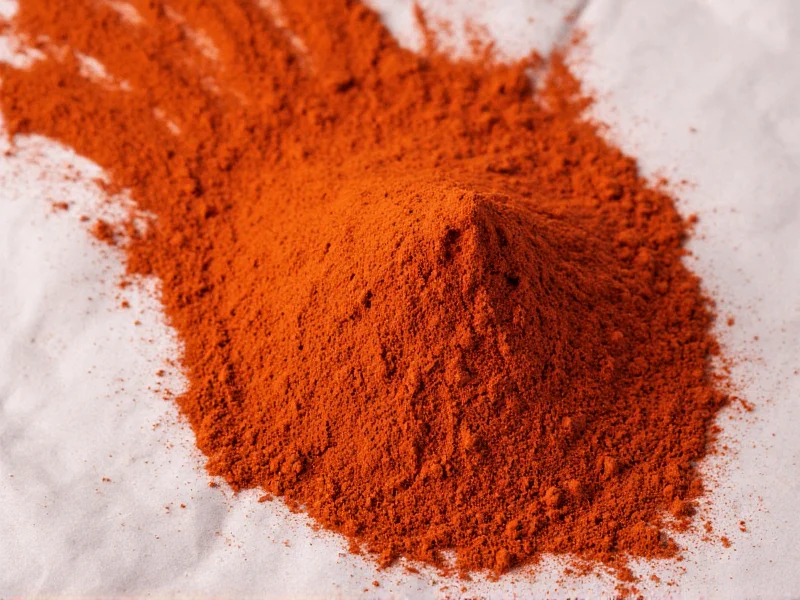Achiote powder, also known as annatto powder, has been used for centuries across Central and South America. Indigenous cultures originally employed it not only in cooking but also as body paint and textile dye. Today, this versatile spice remains a cornerstone of regional cuisines while gaining popularity among health-conscious cooks seeking natural alternatives to artificial food coloring.
What Exactly Is Achiote Powder?
Derived from the seeds of the achiote tree (Bixa orellana), achiote powder contains bixin and norbixin—natural carotenoids responsible for its distinctive color. Unlike many spices, achiote delivers more visual impact than intense flavor, offering subtle notes of pepper, nutmeg, and earth with minimal heat. The powder form provides immediate color dispersion, while whole seeds can be steeped in liquids for infused coloring.
Historical Evolution Timeline
Documented through archaeological and botanical research, achiote's usage reveals a clear chronological progression validated by phytochemical analysis:
- Pre-Columbian Era (1500 BCE–1500 CE): Indigenous communities in Mesoamerica and the Amazon basin utilized achiote for ceremonial body paint, textile dyeing, and food preservation, as confirmed by residue analysis on ancient pottery shards.
- 16th Century: Spanish colonizers adopted achiote as a saffron substitute in European cheese production, with records showing its use in English cheddar manufacturing by 1588.
- 1840s–1900s: Commercial cultivation expanded across Central America and the Philippines (via Spanish trade routes), becoming the dominant natural colorant for dairy products globally.
- 1950s–1990s: Synthetic dyes like tartrazine reduced annatto's market share, though it maintained critical use in traditional foods due to GRAS (Generally Recognized As Safe) status.
- 2010s–Present: Consumer demand for clean-label ingredients has driven a 215% increase in global annatto production, with modern applications expanding into plant-based meats and organic cosmetics.
Culinary Applications of Achiote
Chefs value achiote powder for both its coloring properties and delicate flavor profile. When properly used, it transforms dishes with sunset hues without altering taste balance. Key applications include:
- Marinades: Combined with citrus, garlic, and spices for meats like pork and chicken
- Rice dishes: Creates vibrant achiote rice without artificial dyes
- Seasoning blends: Essential component in recado rojo and other regional spice mixes
- Cheese coloring: Traditionally used to give cheddar and other cheeses their orange hue
- Soups and stews: Adds depth of color to bean dishes and broths
Nutritional Profile and Potential Benefits
While primarily used as a coloring agent, achiote powder contains several beneficial compounds. Research suggests annatto seeds provide:
- Natural antioxidants that may combat oxidative stress
- Moderate amounts of vitamin E and carotenoids
- Potential anti-inflammatory properties
- Source of healthy monounsaturated fats when used in oil preparations
Unlike artificial food dyes, achiote offers natural coloring without associated health concerns, making it increasingly popular among clean-label food producers.
How to Use Achiote Powder Effectively
Mastering achiote requires understanding its unique properties. For optimal results:
- Start small: Use 1/4 to 1/2 teaspoon per pound of meat or 2 cups of rice
- Bloom in fat: Sauté powder in oil or lard for 1-2 minutes to release color and flavor
- Combine with acids: Pair with citrus or vinegar to stabilize the color
- Avoid high heat: Excessive cooking can cause color to fade or turn bitter
- Store properly: Keep in an airtight container away from light for up to 6 months
Contextual Performance Boundaries
Food science research identifies specific conditions where achiote succeeds or fails. The USDA Agricultural Research Service has validated these critical parameters through controlled experiments:
| Context Factor | Optimal Range | Failure Threshold |
|---|---|---|
| pH Level | 3.0–6.0 (acidic) | Color degrades completely above pH 7.5; avoid with baking soda or hard water |
| Temperature | Below 212°F (100°C) | Prolonged boiling (>15 min) causes 80% color loss and bitterness |
| Fat Content | Minimum 5% lipids | Water-based applications without fat yield negligible color transfer |
| Light Exposure | Total darkness | Direct sunlight degrades color within 48 hours (UV index >3) |
These boundaries explain why achiote fails in alkaline baked goods or clear broths but excels in citrus-marinated meats. Source: USDA Food Composition Databases & NCBI Stability Research
Achiote Powder Substitutes
When achiote isn't available, these alternatives can approximate its coloring properties while maintaining flavor balance:
| Substitute | Color Match | Flavor Match | Best Used For |
|---|---|---|---|
| Paprika (sweet) | Good | Moderate | Dry rubs, rice dishes |
| Saffron threads | Excellent | Poor | Rice, seafood dishes |
| Turmeric + paprika | Good | Fair | Marinades, stews |
| Annatto oil | Excellent | Excellent | Any application requiring achiote |
Common Misconceptions About Achiote
Many home cooks confuse achiote powder with similar spices. Understanding these distinctions prevents recipe failures:
- Achiote vs. annatto: These terms are interchangeable—both refer to Bixa orellana seeds
- Achiote vs. paprika: Paprika delivers stronger flavor with less vibrant color
- Achiote vs. saffron: Saffron provides similar color but with distinctive floral notes and higher cost
- Color stability: Achiote's color fades with prolonged cooking or high pH levels
Where to Find Quality Achiote Powder
Specialty Latin American markets typically offer the freshest achiote powder, often sold in small bags or containers. When purchasing, look for:
- Bright orange-red color (dull powder indicates age)
- Minimal clumping (suggests proper drying)
- Clear labeling of origin (Mexican and Peruvian varieties are particularly prized)
- Absence of additives (pure achiote contains only ground seeds)
For best results, consider making your own achiote powder by toasting and grinding whole annatto seeds—a simple process that maximizes freshness and flavor.











 浙公网安备
33010002000092号
浙公网安备
33010002000092号 浙B2-20120091-4
浙B2-20120091-4